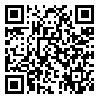BibTeX | RIS | EndNote | Medlars | ProCite | Reference Manager | RefWorks
Send citation to:
URL: http://jdisabilstud.org/article-1-2739-en.html

 , Seyed Abolghasem Mehri Nejad *2
, Seyed Abolghasem Mehri Nejad *2 
 , Rasoul Roshan Chesli3
, Rasoul Roshan Chesli3 
 , Abolghasem Issa Morad4
, Abolghasem Issa Morad4 

2- Associate Professor, Department of Psychology, Faculty of Psychology and Educational Sciences, AlZahra University, Tehran, Iran
3- Professor, Department of Psychology, Faculty of Psychology and Educational Sciences, Shahed University, Tehran, Iran
4- Associate Professor, Department of Psychology, Faculty of Psychology and Educational Sciences, Allamah Tabatabaei’ University, Tehran, Iran
Abstract
Background & Objectives: Life satisfaction, happiness, and psychological well–being, along with the quality of interpersonal relationships and interpersonal differences, contribute to the joys and life satisfaction of students. Some researchers believe that a child's early experiences with their parents and how to satisfy their psychological and emotional needs, and their parents and their interactions with each other, shape a person's personality structure and behavioral patterns for later periods. Incorrect behavioral patterns of parents affect the child's cognition and perception and influence their ideas and beliefs about themselves and others. The dynamism of behavior and institutionalization in children's perception is affected by the vitality and spiritual expansion at home and school. This study aimed to determine the communication model of the effect of the family emotional atmosphere on happiness with the mediating role of the teacher–student interface of fourth– and fifth–grade elementary school students.
Methods: The method of this research was analytic correlational with structural equations. The study's statistical population was 1879 fourth– and fifth–grade elementary school students living in District 2 of Sari City, Mazandaran Province, Iran. They studied in this District's schools in the academic year 2020–2021. The study sample included 319 male students selected by multi–stage cluster random sampling. In this sampling, first, Sari was divided into 2 districts, then District 2 was selected, and out of 35 public schools in this area, 8 schools were randomly selected. Of the schools, two classes (fourth and fourth) from each school and all students in those classes were chosen to complete the research questionnaires. Data were gathered via the Family Emotional Climate Scale (Hilburn, 1994), the Teacher–Student Interaction Questionnaire (Wubbels & Levy, 1993), and the Oxford Happiness Questionnaire (Hills & Argyle, 2002). The Pearson correlation coefficient and structural equation modeling method were used to analyze the data in SPSS version 22 and AMOS version 22 software. The significance level of the tests was set at 0.05.
Results: The results showed that the family emotional atmosphere had a positive, direct, and significant effect on the teacher–student relationship (β=0.65, p<0.001). The family emotional atmosphere had a positive, direct, and significant impact on happiness (β=0.38, p<0.001), and the teacher–student relationship had a positive, direct, and significant effect on happiness (β=0.51, p<0.001). The indirect effect of the family emotional atmosphere on happiness was significant (β=0.33, p<0.001). The goodness of fit indices supported the good fit of the model to the collected data (RMSEA=0.06, AGFI=0.97, GFI=0.94, CFI=0.94).
Conclusion: Based on the results, the family emotional atmosphere, while having a direct and significant effect on students' happiness, indirectly improves their happiness by increasing the teacher–student relationship.
| Rights and permissions | |
 |
This work is licensed under a Creative Commons Attribution-NonCommercial 4.0 International License. |

